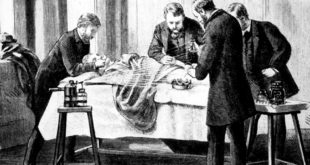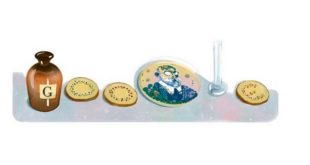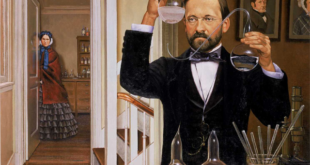Remarkable Growth of the New Science of Bacteriology – ORGANISMS WHICH CAUSE DISEASE – Discoveries Made in the Last Thirty Years by Pasteur, Koch, Behring, and Other Explorers.
The world’s mightiest hunters in the last thirty years have been those who have pursued infinitesimal game – who have found, caught, killed, or held captive those curious little organisms called microbes or bacilli. The greatest and most beneficent discoveries in the century now drawing to a close have been those who revealed the existence of these infinitesimal organisms, before unknown, and their successors who have ascertained the character of many of them, beneficent of harmful, cultivated them, shown their relation to infectious diseases, and now, by laborious experiment, have compelled one of them to serve as an agent in producing a remedy for the dire malady of which it is the cause. The discovery that the deadly poison manufactured or excreted by the bacillus of diphtheria can be used to bring about the production of a fluid substance which will neutralize or overcome that poison in the human body, or make a human being proof against diphtheritic attack, opens a new chapter in the marvelous history of bacteriological science, the development of which has been swift and astounding in the last two decades.
What is a bacillus, or, we should say, what is a bacterium? There are three varieties of bacteria – the bacilli, the micrococci, and the spirilla. These names are suggested by peculiarities of form rather than by any other characteristic. The bacterium is the simplest, the elemental, form of life – a single cell containing the fluid called protoplasm. It is not an animal, but a vegetable, a plant, the lowliest and simplest of al plant forms, consisting of a cell membrane inclo0seing a transparent substance which is apparently structureless. It is living, it is nourished by the absorption of substances through its inclosing membrane, it excretes matter which in some cases is harmless and in other is very poisonous, and it multiplies or reproduces itself in a curious fashion, and at a most extraordinary rte. Those bacteria which are shaped like a little rod, sometimes curbed a little, are called bacilli; those which are spheroidal or ovoid are called micrococci; and the spirilla are bacteria in spiral or curved forms. The germ of Asiatic cholera is a spirillum; that of the disease commonly called consumption is a bacillus; and the germ of croupous pneumonia is a micrococcus.
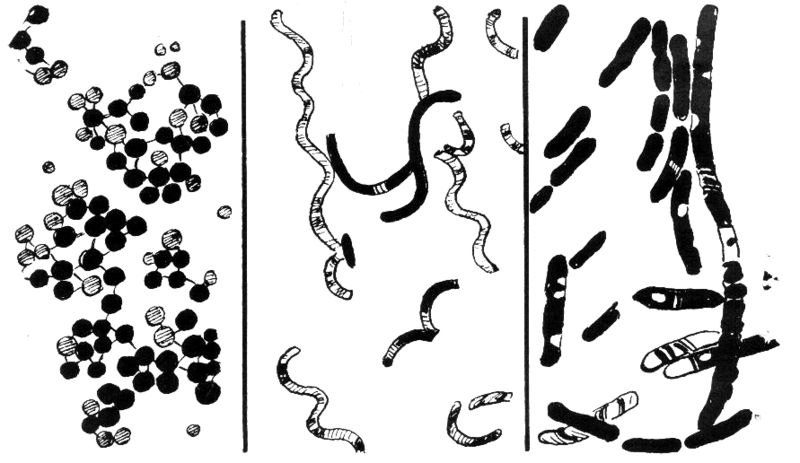
When we say that these bacteria are invisible to the naked eye this does not show how small they are. In dealing with these minute organisms we are at the bottom round of the ladder of life, not only as to simplicity of organic construction, but also with respect to the size of living things. If 1,500 of one of the common varieties of bacteria should be placed in line, end to end, the line would just about cross from one side of the head of a pin to the other. Certain very important bacteria are much smaller than other kinds. There are micrococci of which 250,000 could be laid side by side in the width of an inch. There are bacteria of which 8,000,000,000 could be packed in a very small drop of fluid. These organisms multiply or are reproduced by binary division. The little rod breaks in two, each part becomes a complete bacterium, and the process is repeated indefinitely when the environment and conditions are favorable. Some varieties thus divide once in twenty minutes to favorable media, and bacteriologists have seen a colony of millions spring from one organism in the laboratory in a day.
Some are fatal to certain animals and harmless to others; some thrive or do their work outside the living body; some find a congenial home only in the body of an animal; some work either in or out of the living organism; some must have oxygen and others avoid it. A great number of varieties are not only harmless to mankind, but extremely useful and beneficent agents in the word’s work. The number of those varieties which cause infectious diseases is comparatively small. It is very difficult to distinguish certain very harmful bacteria from other varieties which are beneficent by form and appearance alone, but there are sure methods of differentiating them. It may be the work of one bacillus to excrete deadly poison, and the work of another by the side of it to excrete a harmless substance, and the two may be identical in appearance – little, pale, translucent cells. There are varieties which cannot live in association with other certain other varieties, probably because the produce of one is poisonous to the other. On the other hand, there are bacteria which thrive only in association with certain bacteria and die if deprived of their companionship. When certain bacilli are in adversity, exposed to unfavorable conditions, and threatened with death, their vital forces seem to be drawn up and concentrated in a spot the situation of which can be distinguished, and which is called a spore. This has greater resisting power than could be exerted by the bacillus in its ordinary condition, and a higher degree of heat is required for its destruction than would suffice for bacilli without spores. But a temperature of 233˚ is too hot even for these little citadels. In the world of the bacteria there is continually going on the struggle for existence, which restrains the great multiplying power of the organisms. It has been estimated that, if the proper conditions of temperature, nutrition, &c., could be maintained – that is, if everything needed for the unrestrained process of reproduction could be supplied – one little bacillus would have in five days a progeny sufficient in number to fill the space occupied by the waters of the oceans. The bacteria are at work everywhere – in the soil, in our food, in the lakes and streams. They tear apart and work over dead vegetable and animal matter, producing the condition which we call decay or putrefaction, and preparing the dead material for the use of living organisms. Their lives are prolonged in moisture, and some of the most harmful of them care very little for cold weather. Tubercle bacilli have survived four months of freezing, although two or three hours of direct sunlight will kill them. The typhoid germ can live for weeks in ice, and for that reason ice cut from the surface of streams contaminated with sewage should be avoided.
Without the help of the microscope mankind could not have seen, caught, and studied these minute plant forms. It is believed that Leeuwenhoek, the father of microscopy, did see through his glass, in 1675, some of the larger bacteria, but for a hundred years afterward scarcely anything was known about them. Ehrenberg described sixteen species in 1835, and gave to some of them the names “bacterium,” and “spirillum,” which are now used. But Davaine was the first to give a great impulse to bacteriological research. It was in 1859 that he began to insist that the bacteria were vegetable organisms. We shall see that Davaine took a long step in advance a few years later.
The development of modern bacteriological science was greatly stimulated and assisted by the memorable and long controversy as to spontaneous generation. Was it possible for life, in the form of bacteria, to be started anew in a sterilized liquid from which the air was excluded? Many worthy persons thought that creation did take place under these conditions, because bacteria appeared in the confined and sterilized liquids where there had been none, as they supposed. This controversy had a religious phase, for obvious reasons. The question was settled long ago by the clearest evidence that spontaneous generation does not take place, but while it continued it was the cause of many very valuable experiments with bacteria. Pasteur showed the final and convincing proofs in 1860. Before that time, however, it had been discovered that a loose cotton plug in the neck of a flask or tube excludes all bacteria that may be in the air, while it permits the pure air to enter. This discovery was of great value, and it is now regarded as the first of four very important improvements in method, the second having been the perfection of sterilizing processes by Pasteur and Koch, while the thirds was the use of aniline dyes for staining the bacteria so that they could be seen clearly. The fourth was the use by Koch of the plate method of procuring separate colonies of bacteria for inspection.
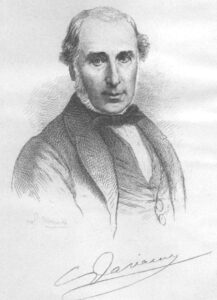
This country is free from anthrax, or splenic fever, but Europe and parts of the East have suffered severely from it. It may be communicated to man. In 1863 experimenters were not making “pure cultures” of a bacillus, and Davaine produced the disease in a healthy animal by inoculating with the blood of an infected one. This method left room for doubt, because the injected blood contained other matter from the diseased animal as well as the bacillus and its poisonous excretion or product. But Davaine was right, nevertheless, and the correctne4ss of his assertion was clearly proved in later years, when Pasteur, Koch, and t6ohers repeated his pioneer experiment with “pure cultures” of the bacillus of anthrax. It was by experiments with this bacillus that Pasteur afterward took another long step forward in the directions of “attenuation” and protective inoculation.
A very important chapter in the history of bacteriological progress would be omitted if no reference should be made to the notable discoveries and achievements of Pasteur in the field of fermentation. The importance of his researches in this field will be seen when it’s recalled that they preceded Davaine’s discovery by some years, as he began to publish his conclusions in 1857. Pasteur’s study of the ferments related directly to the defense of certain agricultural and commercial products against injurious invasion by parasitic organisms, but, indirectly, they were of great service in developing that branch of bacteriology which deals with the pathogenic or disease-producing bacteria. The ferments are also minute vegetable organisms, each consisting of a single cell, but they are not classed with the bacteria. Like the bacteria, but in fields of their own, they tear to pieces, work over, and build up, and are commonly very useful. The researches of Pasteur cleared up their history, pointed out their functions, and were of great commercial value. We shall not describe them here.
But by Pasteur was made the next demonstration that a certain disease was caused by a parasitic organism always associated with it. The disease was one which threatened to destroy the silkworms of France, and after years of study he found and pointed out the cause. The little organism in question, however, is not classed with the bacteria.
Proof that a disease of the human body was caused by a bacillus appears to have been shown first by a German physician named Obermeier, who ascertained, in 1873, that there was in the blood of patients suffering from relapsing fever an active spirillum. This is generally recognized as the characteristic micro-organism of this fever. It is longer than a majority of the bacteria, and at each end has a tiny “flagella,” or hairlike whip. By inoculation with this organism the disease has been produced in certain animals. The bacillus of leprosy was found in 1879 by Hansen. The virulence of this organism was demonstrated by an experiment of exceptional character. In the Hawaiian Islands a condemned criminal was inoculated with it subcutaneously, and he remained under observation until he died of leprosy, five years later.
The bacillus of typhoid fever was first distinguished in 1880 by Eberth, and at about the same time by Koch. At last accounts there had been no successful attempt to produce this disease in the lower animals by inoculation with a culture of this organism. But, while animals to not appear to be subject to the malady, there is no disease concerning which the proof is more conclusive that infection is conveyed from one human being to another by means of the organism, sometimes in polluted water, sometimes in milk, or in contaminated food preparations. It is a very hardy bacillus and its chemical products or toxins are most virulent.
It was in 1880 that the experiments of Pasteur with the bacillus of chicken cholera opened the way for the practice of that method of protective or curative inoculation, the use of which, in cases of diphtheria, is not exciting the interest of the civilized world. It was then shown by Pasteur that a mild attack of chicken cholera followed by immunity could be induced by inoculation with attenuated virus – in other words, by inoculation with a culture of the characteristic bacillus, the virulence of which had been reduced. The strength can be reduced by exposing the cultures to the action of atmosphere oxygen, or to a temperature slightly below the heat, which would destroy the life of the organism, or to the action of certain chemicals. The truth of his assertion has since been proved by experiments with the bacillus of anthrax. It has also been shown that an immune condition may be cause in certain animals by inoculation with the poisonous products of the bacilli, apart from the bacilli themselves. It is by repeated inoculations, beginning with a small injection and gradually increasing the quantity, that horses are made immune against diphtheria, and that there is developed in the serum of their blood the substance hostile to that disease, which is now commonly called diphtheria antitoxine.
Here it may be useful to describe briefly the method of getting hold of the bacilli, cultivating them for use and observation. It is not a very difficult proceeding to obtain a quantity of matter containing the disease-producing bacteria which the bacteriologist desires to cultivate. A very little of it is introduced into the soft contents of a test tube which has been filled with a solution of gelatin, mixed with beef tea, pepton, a little salt, and a little carbonate of soda. This mixture has been carefully sterilized – that is to say, it has been heated until any bacteria in it have been killed – and the mouth of the tube is closed with a cotton plug to keep out bacteria which may be floating in the air. This jelly mixture is one in which bacteria thrive and multiply. It is transparent, and as the number of the organisms increases they can be seen through the side of the glass tube. There is another gelatinous substance, derived from seaweed, which is used when a higher temperature is desired. By the “plate-culture” method of Koch the particular bacillus that is wanted is surely separated from all others. The matter containing this bacillus – and others with it, in all probability – is mixed with the gelatin preparation and spread out in a thin layer on a sterilized glass plate. This plate is carefully protected, and in due time, after the nutrient layer has solidified, the bacilli multiply and can be seen in little colonies or bunches. Commonly, each colony is composed of the descendants of a single bacterium. Then it is not difficult, under the microscope, to pick up with the point of a sterilized wire little particles composed of a few bacilli of the variety desired for cultivation and to transfer these to separate tubes, where various experiments can be made with them. These are “pure cultures.” Having got hold of them, the bacteriologist can ascertain what is acceptable to them, how much heat or cold they can stand, what is the best germicide or disinfectant to be used in killing them or restraining their growth, and can even separate from them and examine the chemical products, poisonous or otherwise, which by them are excreted or manufactured.
The story of the experiments designed to perfect methods of making animals immune or proof against certain diseases and to test the possibility of transmitting this immunity from one animal to another, or from an animal to man, is a long one, and it exhibits the latest and most important development of this comparatively new science. Up to the time when, as the result of four hears’ labor, it became possible to use for benefit of mankind the serum of a horse which had been made immune against diphtheria, the most important experiments in this field had been those depending upon inoculations of the bacillus of tetanus, or lockjaw, made chiefly by Behring, the discoverer or the diphtheria antitoxine, and Kitasato, the Japanese pupil of Koch, who found the bacillus of the Chinese plague last year.
Taking up again the historical record, we see that in 1880 Dr. Sternberg in this country found the micrococcus of croupous pneumonia, and that in 1882 Koch’s greatest achievement, the discovery of the tubercle bacillus, was made known to the world. In the same year the German physicians Loeffer and Schütz pointed out the bacillus of glanders, a culture of which has since come into use as a diagnostic agent of much value. It was in 1882, also, that Pasteur began his work with the attenuated virus of hydrophobia, but no bacillus of this malady has been found. The year 1884 saw three important bacilli added to the list of known and tested pathogenic bacteria – the bacillus (or spirillum) of Asiatic cholera, found by Koch; the bacillus of diphtheria, discovered by Loeffler, and also, independently, by Klebs, for which reason it is called the Klebs-Loeffler bacillus, and the bacillus of lockjaw, pointed out by Nicolaier.
Eight years passed, and no discovery of any importance was added to the list until the specific bacterium which is believed to be the cause of influenza was found in 1892 by Pfeiffer and Canon in Berlin. Kitasato, who returned from Berlin to Japan, where he became an officer of the Imperial Board of Health, studied “the plague” in Canton last year, and there found the characteristic bacillus of that ancient malady. In the latter part of the year the reports of Roux in Paris, and of Behring, Aronson, Ehrlich, and other in Berlin, concerning the beneficial effect of the use of antitoxine serum for preventing or curing diphtheria, drew the attention of the world to this remedy which was found by Behring, first applied by Roux, and had then been tested for several months in the hospitals of Berlin and Paris.
We have said that it is possible to obtain from “pure cultures” of disease-producing bacteria an extract containing only the poisonous substance which the little organisms manufacture or excrete as a product of their life processes, and the presence and influence of which in the human system are believed to be the immediate cause of the disease associated with the bacilli in question. The toxic products of several specific organisms have been thus separated and tested. The tuberculin of Prof. Koch is a preparation of the poison manufactured or excreted by the bacillus of tuberculosis, or consumption, and it was at first supposed that injections of it would improve the condition of consumptive persons. This was a grave error. It is now generally held that the addition by injection of tubercle poison already in the body accelerates the progress of the disease by hastening the development of tubercular masses. In the case of certain varieties of tuberculosis, where the tubercular masses are on the external surface, as in lupus, this acceleration may be beneficial, but where the tubercular growth is confined, as in consumption, the acceleration is injurious and tends to hasten a fatal termination.
Nevertheless, tuberculin has great value, because by the use of it the existence of tuberculosis in cows or other cattle can be detected with practically unerring certainty, and it is now generally employed for this purpose. In a great number of cases the existence of the disease in cattle can be detected in no other way. It is by the use of this diagnostic agent that the authorities of Massachusetts are now inspecting all the cattle in that State. It was used in this State upon thousands of cows by the Board of Health in 1893, and it will be used here again when the State shall undertake the work of purifying the milk and meat supply. Sound cattle are not infected by the inoculations or injections, for the fluid introduced contains no bacilli, but only the sterilized product of the infecting organisms.
The antitoxine used for the cure or prevention of diphtheria is, in an important sense, the opposite of this tuberculin. It is not the poison produced by the bacillus of diphtheria, but a substance hostile to that poison, a defensive and protective substance which is developed in the serum of a horse’s blood to fight for the horse against the invasion of diphtheria caused by injections of diphtheria poison. When it becomes so powerful that very large injections of diphtheria poison cause no disturbance in the horse, it is a remedy for diphtheria in a human being, and after it has been introduced into the human patient’s blood it continues there the good fight which it had been making for the horse. There seems to be overwhelming proof not only that it is a remedy of very great value, but also that when properly prepared and administered it is absolutely harmless. F.D.R.
 Pasteur Brewing Louis Pasteur – Science, Health, and Brewing
Pasteur Brewing Louis Pasteur – Science, Health, and Brewing 
